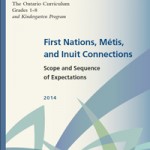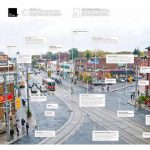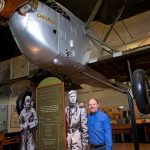
By Anne Bubienczyk
LESSON TITLE :
Review of Social Studies Concepts from grades 4-6
EXPECTATIONS:
A1. analyse aspects of the lives of various groups in Canada between 1713 and 1800, and compare them to the lives of people in present-day Canada
A1.1 explain how various features that characterize a community can contribute to the identity and image of a country
A3. describe various significant events, developments, and people in Canada between 1713 and 1800, and explain their impact
ASSESSMENT:
-Assessment as learning
-Observational and anecdotal
-Circulate throughout the class during small group discussion and individual work to gauge level of student comprehension and engagement
PLANNING NOTES:
-Review of First Nations traditions, their innovations and how they impacted Canadian development and society
-Relevant Overall Expectations from grades 4-6 curriculum that students should have already been familiarized with, but will be reviewed in these two lessons (80 minute period):
– Gr. 4 A1. compare key aspects of life in a few early societies (3000 BCE–1500 CE), each from a different region and era and representing a different culture, and describe some key similarities and differences between these early societies and present-day Canadian society
– Gr. 5 A2. use the social studies inquiry process to investigate aspects of interactions among and between First Nations and Europeans in Canada prior to 1713 from the perspectives of the various groups involved
– Gr. 6 A1. assess contributions to Canadian identity made by various groups and by various features of Canadian communities and regions
PRIOR KNOWLEDGE REQUIRED: (of STUDENTS):
–This lesson is designed to review major topics that should have been presented, covered, and discussed throughout grades 4-6 in Social Studies
-Hence, the purpose of this lesson is to review prior knowledge for students, preceding the commencement of the grade 7 New France and British North America Unit
-Basic knowledge students should have about the First Nations people:
-The First Nations People were storytellers. They passed on the traditions and beliefs, and history of their people though story telling.
ACCOMODATIONS/ MODIFICATIONS:
-Increased time
-Work buddy
-Frequent prompting to keep students on task, and guide learning
RESOURCES:
Ontario Ministry of Education. (2013). The Ontario curriculum grades 1-6: Social studies, grades 7 and 8: History and geography. Retrieved from http://www.edu.gov.on.ca/eng/curriculum/elementary/sshg18curr2013.pdf
TEACHING / LEARNING TASKS:
Minds On: (15 minutes)
-KWL Chart as an Introduction, Activation of Prior Knowledge
After giving students time for independent work and small group conferencing, write 3 sentences on board for students to fill in under the K portion of their KWL chart
How the First Nations People shaped Canada:
- The First Nations People introduced and ate vegetables, fruits and crops that we still eat and grow today (e.g.: corn, squash, beans, pumpkins).
- They introduced means of transportation, such as canoes, kayaks, snowshoes and sleds.
- The First Nations People were very innovative. They mapped routes, made tools, and used herbs as medicine.
Action (15 minutes)
Whole Class Mapping Activity: Settler communities
Review 6 main First Nations groups who settled in Canada by projecting a map
The First Nations People in Canada can be divided into 6 main groups on the basis of where they lived—Subarctic, Arctic, Northwest Coast, Plateau, Plains, and Eastern Woodlands.
Show map to visualize where the groups lived, locate on map group that lived closest to present-day Toronto
Discuss what can be inferred about each group on the basis of where they lived?
What do you think are the similarities and differences between various groups?
Think, Pair, Share and Discussion Questions (15 minutes)
How does environment impact the people in terms of food, innovations, lifestyle, technology?
Frame this question in terms of the First Nations people in Canada, European settlers who came to New France, as well as ancient civilizations (e.g., the Mayans and the Aztecs).
Provide students with a graphic organizer to note their thoughts, ideas, and responses
Review of major events through the creation of a timeline (20 minutes)
Whole Group Instruction and Independent Work
-With the teacher guiding this activity, and with student input and discussion, students will create a timeline highlighting key events in Canadian history that students should have been introduced to in grades 4-6
-This timeline, created using text and visual images, will be kept as a reference point throughout this unit
Topics/Events covered will include:
-1608 Samuel de Champlain establishes a settlement in what is currently known as Quebec City
-Interactions between First Nations and European settlers—topics discussed will include the fur trade, Jesuit missionaries
-Major settlement in New France, their way of life, language, religion, tradition
Consolidation (15 minutes)
Image Analysis:
Analysis Activity of European settlers’ impact on First Nations people
Analysis and Discussion in small groups, followed by whole class discussion
Discussion Questions: What does this say about the relationship between the First Nations People and European settlers?
What can you infer about the European settlers from this image?
What can you infer about the First Nations people from this image?
Why?
HOMEWORK:
-On the basis of this review session, students should now work to add to the “Know” and “Want to Know” sections of their KWL charts in greater depth, particularly on what they would like to continue learning about Canada’s history
-On the basis of today’s discussion of how environment, land, and surroundings affect Canadians’ lives, students will write a short reflection (brief paragraph) on how their environment and surroundings (people and place) affect their lives

